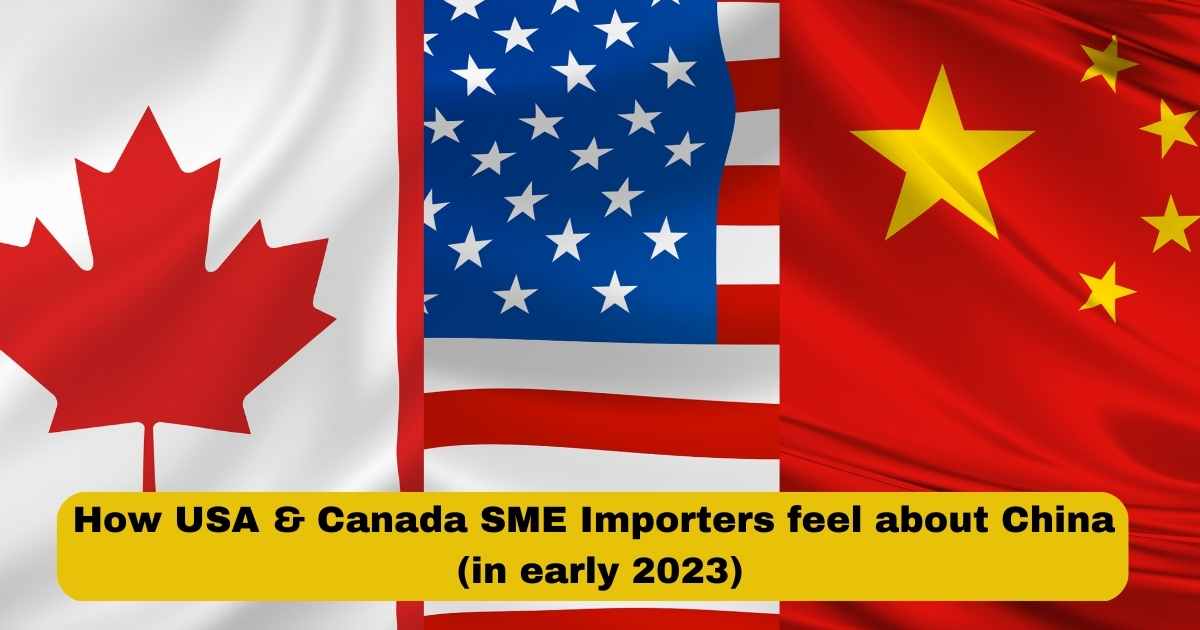I recently got back from a trip in the Southwest and Northeast of the USA (for about 3 weeks), and in East Canada (for about 2 weeks). I haven’t met a lot of clients for years (or ever) due to difficult traveling, so it was necessary.
One topic that came up in most discussions was the love-hate relationship between China and the USA. It’s easy to see some trends or let’s say different groups of attitudes when it comes to this topic.
I haven’t done a scientific survey, so I can’t indicate which of these attitudes is dominant, but it is interesting to describe them here.
(Note: this was before the “Chinese balloon incident” as Wikipedia called it. Some analysts have suggested the bilateral relationship is now at its lowest level since the late 1980s or even since the 1970s…)
1. “We have (or wish to have) a mix of production in various countries”
This is probably what I heard from the majority of the clients I have met. China + 1, China + 2, etc. is a common objective.
In certain industries (e.g. non-technical apparel), that is relatively easy. As soon as there are electronic parts, though, it is more difficult.
As some importers have found out, moving only the final assembly of a product from, say, China to Vietnam, may seem like a good idea, but it adds costs and lead times. It adds risks, too, because anything that happens in China and also anything that happens in Vietnam may impact you.
(Oh, and if it’s only a “screwdriver operation” on made-in-China parts, it may still be considered by the US Customs & Border Protection as a product from China… Make sure to talk to an international trade lawyer.)
That’s why Apple’s plan to get most manufacturing out of China is going to take many years (we covered it here). It is particularly difficult for them because of their tough requirements (not only finished product quality but also the speed of moving a new product through NPI, flexibility in adopting new processes, etc.) and because of their high production volumes.
2. “Be realistic, everything around us is made in China”
Some importers have a very close partnership with one or two Chinese factories and they can’t imagine their business not relying on those suppliers.
For example, they might have co-developed a product with a manufacturer in Shenzhen or Suzhou… and understandably they don’t feel they can move that production out of China for a variety of reasons.
Or they might enjoy great credit terms from a long-time supplier with whom they have a solid personal relationship. In turn, they can extend credit terms to their own customers, and it sets them apart in their market.
Or, simply, they enjoy very low-cost production. Let’s look at knives and scissors as an example. There are a lot of crappy products coming out of the Yangjiang area in Guangdong, but some importers have set the right processes and picked the right suppliers and they are getting a great deal that they simply can’t replicate anywhere else.
How are these importers analyzing the situation?
If trade with China were to be interrupted suddenly, the consequences would be extremely severe for a large span of the American economy (retailers, tens of thousands of importers, car brands, and so on and so forth), and that’s why it won’t happen. The government is not going to shoot itself in the foot.
And that’s not a bad argument. Looking at the past, and looking at the recent trade data, it’s hard to imagine a sudden stop to bilateral trade.
Looking at what happens in the US Congress and the US Senate, though, it is clear that obstacles are going to multiply. The risk that comes with buying products from China and selling them in North America is well covered in the recent article Your China Supply Chain is a Bet Against the House written by Andrew Hupert and Dan Harris. They forecast upcoming trade restrictions and runaway compliance costs.
3. “We are moving away from China because of poor performance there”
This is the third situation that I came upon. It is not an attempt to go “Zero-China“, but it is a response to a recurring source of frustration — be it inconsistent quality, long delivery delays, sudden price hikes, etc.
When a key supplier just doesn’t perform and/or doesn’t cooperate, at one point a decision must be made. And the insane situation of the covid-zero policies magnified those frustrations… and accelerated some of those hard decisions.
When a company is specialized in a certain product and has a sufficient grasp of the manufacturing processes to plan for a transfer to another facility, many options generally open up – both in and outside of China. With all the risks inherent to a China supply chain, why not try and set up a new supply chain in another country, which could be in South-East Asia or Mexico? That’s tempting.
Is the new location more expensive? After the prohibitively high shipping costs of 2021 and 2022, and taking into account the extra expenses generated by the supplier’s poor performance, it is usually seen as cost-efficient…
*****
Later this year, I’ll probably go and visit some clients in Europe, and I’ll keep some notes. I am guessing it will be much less negative. However, we have seen an effort to get productions closer to Western Europe, and there are many options (Turkey, Poland, Portugal, etc.), so things are changing there, too!

